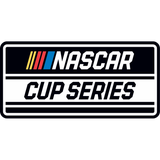The prevailing thought at the end of the Charlotte road course race last Sunday was that Denny Hamlin should not have passed Ross Chastain on the final lap because it likely would have knocked out Joey Logano from the playoffs.
The question: Would that be a legal decision in light of NASCAR’s manipulation rules?
NASCAR changed some of the wording in its “performance obligation” rule prior to this year, removing the term “manipulate the finish positions of the event.” That came from Martinsville the previous season when NASCAR fined three drivers and suspended their spotters, competition directors and crew chiefs for either losing spots or not making the pass.
The rule reads: “Any member who attempts to improperly influence the outcome of the event or encourages, persuades or induces others to do so shall be subject to penalties. … Prohibited actions include, but are not limited to, intentional planning or conduct that prioritizes objectives other than achieving the best possible competitive result for their team.”
So if Hamlin decides he doesn’t want to pass Chastain to keep Logano out of the playoffs, is he in violation of the rule? Unlike other race manipulation penalties in the past, Hamlin is making a choice to help himself, not anyone else.

Ross Chastain (No. 1) and Denny Hamlin (No. 11) spin after an on-track incident to finish the race in reverse to end the NASCAR Cup Series Bank of America ROVAL 400 at Charlotte.
It could be argued that he didn’t prioritize achieving the best result if he didn’t pass Chastain. Or it could be argued that he’s prioritizing achieving the best result for his season by knocking Logano out, as Logano would likely be a contender at Phoenix.
Or it could be argued that if he tries to pass Chastain, he knows he is going to get wrecked — either as he tries to pass him or afterward — because Chastain needs the point.
It happened afterward entering the final chicane. If Chastain’s dump of Hamlin worked and Chastain earned that point he needed, should that be considered a legal move to advance?
Some would say that is too aggressive. However, Hamlin lost virtually nothing by being wrecked, so it seems that move would be one that wouldn’t result in a penalty. The only difference would be a small amount in purse and a few points that could change Hamlin’s season-ending points position if he fails to make the final round.
Drivers get bumped and wrecked for the win all the time at the NASCAR national series level and the only time NASCAR has stepped in was after Richmond last year when Austin Dillon had contact with two cars in the final moments in order to win.
The Chastain move seems like the kind of action NASCAR wanted when it created the playoff system. There have been times when a driver needing a point has made a desperation move against someone who is no longer in contention or has already advanced. NASCAR would have a hard time arguing for an elimination format designed to create moments and then rule against that one.
Frankly, that Chastain move could be looked at as one that is “prioritizing achieving the best competitive result for his team.”

Ross Chastain and Denny Hamlin talk after the wild ending in Charlotte.
And that is the problem with this rule. Just how far is not across the line when prioritizing achieving the best competitive result? Does that mean you should be required to bump someone?
Or just how conservative can a driver be and still prioritize achieving the best competitive result? Passing another car inherently brings some element of risk that the other driver will run the anticipated lane and not (intentionally or unintentionally) move into the groove when the other driver is making the pass.
There were times in the race at Charlotte when drivers were told to save their tires late in the race. Sure, there is a chance of a late-race caution but it sure sounded like an instruction not to make the pass. Whether that was to help out the driver ahead or just not wanting to potentially be a victim of a move of that driver isn’t totally clear.
At Martinsville last year, when Dillon and Chastain were penalized for not passing William Byron, there was an additional element. Their side-by-side racing kept other cars from making the pass as well. But they were primarily penalized for trying to help a fellow Chevrolet driver not lose additional spots.
With gambling interests in sports so high, NASCAR can’t just say that everything goes and make it a free-for-all, that if a driver can get help from teammates, then so be it because that is the benefit of having teammates.
NASCAR didn’t penalize anyone at Charlotte, so if spotters and drivers use similar tactics at Martinsville in a few weeks, that should be OK. And while NASCAR hates hypothetical situations, it might behoove league officials to reiterate what it expects. If NASCAR saw anything borderline at Charlotte, officials need to let people know.
Reality says the line of what drivers and spotters and teams can do is not all that clear. But NASCAR can use Charlotte to help make the line a little less blurry.
Bob Pockrass covers NASCAR and INDYCAR for FOX Sports. He has spent decades covering motorsports, including over 30 Daytona 500s, with stints at ESPN, Sporting News, NASCAR Scene magazine and The (Daytona Beach) News-Journal. Follow him on Twitter @bobpockrass.
What did you think of this story?
recommended

Get more from the NASCAR Cup Series Follow your favorites to get information about games, news and more
